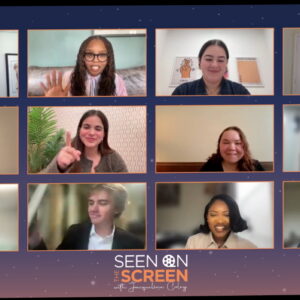Education | September 8th, 2020
Zoom & The Downside of Virtual Learning
By: A-Chai’a Jackson

The hasty shift from in-person engagement to online learning seems to be a work in progress for students and university faculty to adjust to a new learning system. On August 24, school began for students and educators at Florida A&M University (FAMU). Due to the high influx of traffic on Zoom, users experienced a nationwide outage which forced everyone to readjust their regular class schedule.
Many students are learning to adjust to Zoom and Canvas to maintain their academic excellence one day at a time, despite inconveniences. “I personally wasn’t affected by the Zoom crash [that] morning. By the time my first class was set to start I received an email informing us that the problem was resolved,” said Mulleak Pitts, a junior veterinary technology student at FAMU. The skill to adapt under pressure is essential during these trying times.
Zoom is one of the most relied upon resources for learning during this unprecedented time. Due to high traffic on the application throughout the nation, a more efficient way to accommodate users is highly suggested.
Downdetector, a website that tracks real-time and outage concerns for companies and services, reported 15,962 issues concerning Zoom conferencing. Also, 70% of those underlying issues consisted of login failure, according to CNN.
Some students say that being ordered to use new systems like Zoom and Canvas forces them out of their comfort zones and will take time for them to navigate. The first week of school usually consists of adjustments with trial and error, but these minor fixes can be resolved in a matter of time and patience.
“Unfortunately, most of my classes showed up on Canvas late at night around 1:00 a.m. I was also not getting notifications on the app which consisted of vital information such as homework assignments that were due before the first day of class,” Pitts said. The virtual learning curve is only a downfall if students are not using effective communication and available resources to accommodate their learning.
“My experience using Zoom and Canvas has been smooth sailing so far, however, Zoom can improve the poor, unpredictable video quality and the reason why I say this is because Zoom is often blurry and pixelated,” said Kenyaun Jackson, a sophomore business administration student at Tallahassee Community College (TCC).
A few helpful solutions for users to improve their Zoom quality was provided by the service. The company suggested manually refocusing the camera by shifting the ring around the lens, unless a phone is being used, which will require different methods. They also said that another cause of blurriness could be a dirty lens. It was suggested that a silk or microfiber cloth using isopropyl alcohol could bring a clearer image.
“We have to be mindful that everyone is not fortunate to own a laptop or internet during this pandemic, but help is available to us at our schools. There really is no downside to my virtual learning other than Zoom having poor video quality, ”Jackson said.
FAMU’s Information Technology division collaborates with faculty and staff to provide reliable technical support to assist with learning.
“Given the short amount of time we were given with the pandemic, FAMU did an amazing job pulling it off in terms of a shift to online learning,” said Ronald E. Henry, II, the associate vice president and chief information officer for Information Technology services. “We actually have a lot to do with Zoom because we are paying our dollars to use their domain. However, technology is important and we cannot be successful without it.”
Information technology services would like for students to meet them halfway in terms of being assisted with concerns. The university does a persistent job at hosting virtual webinars to engage students with educators and receive services for technical support.






